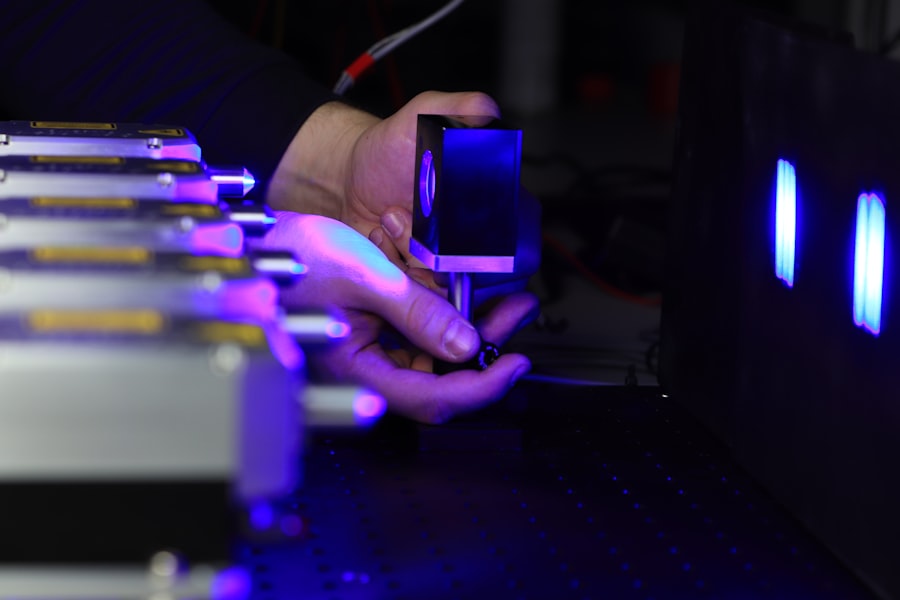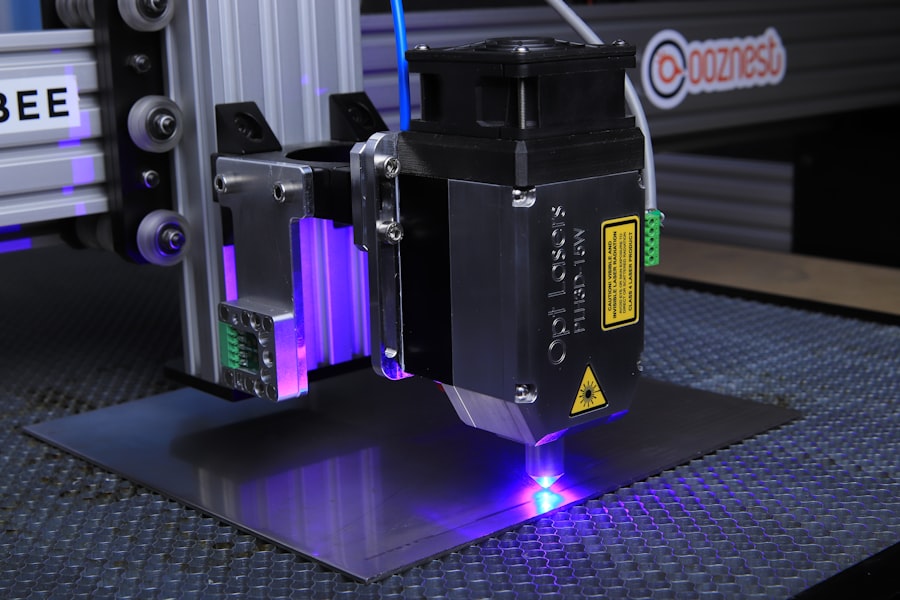Before undergoing any skin treatment, it is essential to prioritize hydration and moisturization.
Drinking plenty of water in the days leading up to your treatment can help ensure that your skin is well-hydrated.
When your skin is hydrated, it appears plumper and more elastic, which can enhance the results of the treatment you are about to receive. Aim for at least eight glasses of water a day, and consider incorporating hydrating foods like cucumbers, oranges, and watermelon into your diet. In addition to internal hydration, external moisturization plays a crucial role in preparing your skin for treatment.
Using a high-quality moisturizer can create a protective barrier on your skin, preventing dryness and irritation. Look for products that contain ingredients like hyaluronic acid or glycerin, which are known for their hydrating properties. Applying moisturizer regularly will not only improve your skin’s texture but also help it recover more quickly after the treatment.
By taking these steps to hydrate and moisturize, you set the stage for a more effective and comfortable experience.
Key Takeaways
- Hydrate and moisturize your skin before and after the treatment to keep it healthy and supple.
- Avoid sun exposure before and after the treatment to prevent skin damage and irritation.
- Shave the treatment area before your appointment to ensure the best results and minimize discomfort.
- Wear loose and comfortable clothing to prevent irritation and allow the treated area to breathe.
- Remove makeup and lotions before the treatment to ensure the area is clean and ready for the procedure.
- Arrive clean and fresh for your appointment to ensure the best results and minimize the risk of infection.
- Discuss any concerns with the technician before the treatment to address any issues and ensure a positive experience.
- Follow aftercare instructions provided by the technician to promote healing and achieve the best results.
Avoid Sun Exposure
Sun exposure can have detrimental effects on your skin, especially before undergoing any treatment. The ultraviolet (UV) rays from the sun can cause skin damage, leading to increased sensitivity and a higher risk of complications during and after your procedure. To protect your skin, it is advisable to avoid direct sunlight for at least a week prior to your appointment.
If you must be outdoors, make sure to wear a broad-spectrum sunscreen with an SPF of at least 30. This will help shield your skin from harmful rays while allowing you to enjoy your time outside. In addition to sunscreen, consider wearing protective clothing such as wide-brimmed hats or long-sleeved shirts when you are in the sun.
This extra layer of protection can significantly reduce the risk of sunburn and other skin issues that could interfere with your treatment. Remember that even on cloudy days, UV rays can penetrate through the clouds, so it’s essential to remain vigilant about sun protection. By taking these precautions, you can ensure that your skin is in the best possible condition for your upcoming treatment.
Shave the Treatment Area

Preparing the treatment area by shaving is an important step that should not be overlooked. If you are planning to undergo a procedure that involves hair removal or skin resurfacing, having a clean-shaven area can enhance the effectiveness of the treatment. Shaving helps to remove any unwanted hair that could interfere with the procedure, allowing for better access to the skin and more precise results.
It’s best to shave the area the night before or the morning of your appointment to ensure that your skin is smooth and free from irritation. When shaving, be sure to use a clean razor and a gentle shaving cream or gel to minimize the risk of nicks and cuts. Take your time and use light strokes to avoid irritating the skin.
If you have sensitive skin or are prone to razor burn, consider using an electric trimmer instead. This can help you achieve a close shave without causing irritation. By taking the time to properly shave the treatment area, you not only prepare your skin for the procedure but also contribute to a more comfortable experience overall.
For more information on skin resurfacing and hair removal procedures, you can visit the American Society of Plastic Surgeons website.
Wear Loose and Comfortable Clothing
| Benefits of Wearing Loose and Comfortable Clothing | Reasons |
|---|---|
| Improved circulation | Loose clothing allows for better blood flow |
| Reduced risk of skin irritation | Tight clothing can cause chafing and irritation |
| Enhanced comfort | Loose clothing allows for better movement and comfort |
| Regulated body temperature | Loose clothing can help in regulating body temperature |
The clothing you choose to wear on the day of your treatment can significantly impact your comfort level during and after the procedure. Opting for loose-fitting and comfortable clothing is highly recommended, as it allows for easy movement and prevents unnecessary friction against your skin. Tight clothing can cause irritation or discomfort, especially if you are undergoing a treatment that may leave your skin sensitive or inflamed.
By wearing breathable fabrics like cotton or linen, you can help keep your skin cool and comfortable throughout the process. Additionally, consider wearing clothing that provides easy access to the treatment area. If you are having a procedure done on your arms or legs, wearing shorts or a tank top can make it easier for the technician to perform their work without having to adjust or remove layers of clothing.
This not only streamlines the process but also helps you feel more at ease during your appointment. Ultimately, choosing loose and comfortable clothing is a simple yet effective way to enhance your overall experience.
Remove Makeup and Lotions
Before heading into your treatment appointment, it is crucial to remove any makeup or lotions from your skin. These products can create a barrier that may interfere with the effectiveness of certain treatments, making it essential to start with a clean canvas. If you wear makeup regularly, consider setting aside some time before your appointment to thoroughly cleanse your face and any other areas that will be treated.
Use a gentle makeup remover or cleansing oil to ensure that all traces of makeup are eliminated. In addition to makeup, be mindful of any lotions or creams you may have applied earlier in the day. These products can clog pores or create an unwanted layer on your skin that could hinder the treatment process.
A simple wash with a mild cleanser will suffice in removing these products and preparing your skin for treatment. By taking these steps to remove makeup and lotions, you help ensure that your technician can work effectively and safely on your skin.
Arrive Clean and Fresh

Arriving at your appointment feeling clean and fresh is not just about personal hygiene; it also sets a positive tone for your treatment experience. Taking a shower before your appointment can help remove any sweat or impurities from your skin, making it easier for the technician to perform their work effectively. Additionally, being clean can help reduce the risk of infection or complications during the procedure, as it minimizes the presence of bacteria on your skin.
When you arrive at the clinic or spa, take a moment to relax and breathe deeply. This will help calm any nerves you may have about the upcoming treatment. A fresh mindset can enhance your overall experience and allow you to fully engage with the process.
Remember that this is an opportunity for self-care, so embrace it with an open heart and mind. By arriving clean and fresh, you not only show respect for yourself but also for the professionals who will be working on you.
Discuss Any Concerns with the Technician
Open communication with your technician is vital for ensuring a successful treatment experience. Before beginning any procedure, take the time to discuss any concerns or questions you may have with them. Whether it’s about potential side effects, recovery time, or specific techniques used during the treatment, expressing your thoughts can help alleviate anxiety and provide clarity on what to expect.
Your technician is there to guide you through the process and address any uncertainties you may have. Additionally, sharing relevant medical history or skin conditions with your technician is crucial for tailoring the treatment to meet your individual needs. They may need to adjust their approach based on factors such as allergies or previous reactions to similar procedures.
By being open about your concerns and medical background, you empower your technician to provide you with the best possible care tailored specifically for you.
Follow Aftercare Instructions
Aftercare is just as important as preparation when it comes to achieving optimal results from your treatment. Following the aftercare instructions provided by your technician is essential for ensuring proper healing and minimizing any potential side effects. These instructions may include guidelines on how to care for your skin in the days following the procedure, such as avoiding certain products or activities that could irritate the treated area.
In addition to following specific instructions, be mindful of how your skin responds post-treatment. If you notice any unusual reactions or prolonged discomfort, don’t hesitate to reach out to your technician for guidance. They are there to support you throughout the entire process, including recovery.
By adhering closely to aftercare instructions and maintaining open communication with your technician, you set yourself up for success in achieving beautiful results from your treatment. In conclusion, preparing for a skin treatment involves several key steps that contribute significantly to both comfort and effectiveness. From hydrating and moisturizing beforehand to following aftercare instructions diligently, each aspect plays a vital role in ensuring a positive experience.
By taking these steps seriously and engaging openly with professionals throughout the process, you empower yourself to achieve optimal results while enjoying a sense of well-being during this self-care journey.
If you’re looking for more tips on how to prepare for your laser hair removal appointment, check out this article on what to wear to your laser hair removal appointment. This article provides helpful advice on choosing the right clothing to ensure a comfortable and successful treatment session. It’s always good to be well-prepared for your laser hair removal appointment to maximize the effectiveness of the treatment.
FAQs
What should I do before my laser hair removal appointment?
Before your laser hair removal appointment, it is important to avoid sun exposure and tanning beds for at least six weeks. You should also avoid plucking, waxing, or electrolysis for six weeks prior to your appointment.
Should I shave before my laser hair removal appointment?
Yes, it is recommended to shave the area to be treated the day before or the day of your laser hair removal appointment. This helps the laser to target the hair follicles more effectively.
What should I wear to my laser hair removal appointment?
You should wear comfortable clothing to your laser hair removal appointment. It is also recommended to wear loose-fitting clothing to avoid irritation to the treated area after the procedure.
Can I apply any products to the treated area after my laser hair removal appointment?
It is recommended to avoid applying any perfumes, lotions, or deodorants to the treated area for at least 24 hours after your laser hair removal appointment. You should also avoid hot showers, saunas, and strenuous exercise for 24-48 hours.
How long does it take to see results after laser hair removal?
You may start to see results after your first laser hair removal session, but multiple sessions are usually required for optimal results. It typically takes 4-6 sessions spaced 4-6 weeks apart to achieve the best results.




